PROBABILITY, RANDOM
VARIABLES, AND
STOCHASTIC PROCESSES
FOURTH EDITION
Athanasios Papoulis <
University Professor
Polytechnic University
s. Unnikrishna Pillai
Professor of Electrical and Computer Engineering
Polytechnic University
Boston Burr Ridge, IL Dubuque, IA Madison, WI N~w York San Francisco St. Louis
Bangkok Bogota Caracas Kuala Lumpur Lisbon London Madrid Mexico City
Mila!) Montreal New Delhi Santiago Seoul Singapore Sydney Taipei Toronto
�
McGraw-Hill Higher ~~~~ Z!2
A Division 0{ The McGrAw-Hill Companies
PROBABIUTY. RANDOM VARIABLES, AND STOCHASTIC PROCESSES. FOUR11:l EDmoN
Published by McGraw-Hill, a business unit of The McGraw-Hili Companies, Inc •• 1221 Avenue of the
Americas, New York. NY 10020. Copyright e 2002. 1991, 1984. 1965 by ne McGraw-Hill Companies,
Inc. All rights reserved. No part of this publication may be reproduced or dislributed in any form or by any
means, or stored in a database or retneval system, without the prior written consent of The McGraw-Hili
Companies, Inc .. including, but not limited to. in any network or other electronic storage or transmission. 01
broadcast for distance learning.
Some ancillaries. including electronic and print components, may not be available to customers outside the
United States.
This book is printed on acid-free paper.
International1234567890 QPFJQPF 09876543210
DomestiC!
1234567890 QPP/QPF 09876543210
ISBN 0-07-366011-6
ISBN 0-07-112256-7 (ISE)
General manager: Thomas E. CAsson
Publisher: Elizabeth A. JOI1U
Sponsoring editor: Cotherine Fields Shultz
Developmental editor: Michelle 1.. Flornenhoft
Executive marketing manager: John Wannemacher
Project manager: Sheila M. Frank
Production supervisor: Sherry 1.. Kane
Coordinator of freelance design: Rick D. Noel
Cover designer: So Yon Kim
Cover image: CPhotoDisc. Signature &rlu, Dice. SS1OO74
Supplement producer: Brenda A. Emzen
Media technology senior producer: PhiUip Meek
Compositor: Interactive Composition Corporation
1YPeface: /0/12 7imes Roman
Printer: Quebecor World Fairfield. PA
Library of Congress Cataloging-ln.PubJication Data
Papoulis. Atbanasios. 1921-
Probability, random variables. and stochastic processes I Atbanasios Papoulis.
S. Unnikrishna PlIlai. - 4th ed.
p.em.
Includes bibliographical references and index.
ISBN 0-07-366011-6 -
1. Probabilities. 2. Random variables. 3. Stochastic processes. l. Pillai. S. U~bna, 1955 -.
ISBN 0-07-112256-7 (ISE)
II. TIde.
QA273 .P2
5 19.2---dc21
2002
2001044139
CIP
INTERNATIONAL EDmON ISBN 0-07-112256-7
Copyright C 2002. Exclusive rights by The McGraw-Hill Companies, Inc .. for manufacture and export. This
book cannot be re-exported from the country to which it is sold by McGraw-Hut. The International Bdition is
not available in North America.
www.mhhe.com
�
CONTENTS
Preface
PART I PROBABILITY AND RANDOM VARIABLES
Chapter! The Meaning of Probability
1-1 Introduction I 1-2 The Definitions I 1-3 Probability
and Induction I 1-4 Causality Versus Randomness
Chapter 2 The Axioms of Probability
2-1 Set Theory I 2-2 Probability Space I 2-3 Conditional
Probability I Problems
Chapter 3 Repeated Trials
3-1 Combined Experiments I 3-2 Bernoulli
Trials I 3-3 Bernoulli's Theorem and Games of
Chance I Problems
Chapter 4 The Concept of a Random Variable
4-1 Introduction I 4-2 Distribution and Density
Functions I 4-3 Specific Random Variables I 4-4 Conditional
Distributions I 4-5 Asymptotic Approximations for Binomial
Random Variable I Problems
ChapterS Functions of One Random Variable
5-1 The Random Variable g(x) I 5-2 The Distribution "
of g(x) I 5-3 Mean and Variance I 5-4 Moments I
5-5 Characteristic Functions I Problems
Chapter 6 Two Random Variables
6-1 Bivariate Distributions I 6-2 One Function of Two Random
Variables I 6-3 Two Functions of Two Random
Variables I 6-4 Joint Moments I 6-5 Joint Characteristic
Functions I 6-6 Conditional Distributions I 6-7 Conditional
Expected Values I Problems
ix
1
3
15
46
72
123
169
�
vi CONTENTS
Chapter 7 Sequences of Random 'Variables
7-1 General Concepts / 7-2 Conditional Densities,
Characteristic Functions, and Normality I 7-3 M~ Square
Estimation I 7-4 Stochastic Convergence and Limit
Theorems I 7-5 Random Numbers: Meaning and
Generation I Problems
Chapter 8 Statistics
8-1 Introduction I 8-2 Estimation I 8-3 Parameter
Estimation I 8-4 Hypothesis Testing I Problems
PART II STOCHASTIC PROCESSES
Chapter 9 General Concepts
9-1 Definitions I 9-2 Systems with Stochastic Inputs I
9-3 The Power Spectrum I 9-4 Discrete-Time Processes I
Appendix 9A Continuity, Differentiation, Integration I
Appendix 9B Shift Operators and Stationary
Processes I Problems
Chapter 10 Random Walks and Other Applications
10-1 Random Walks I 10-2 Poisson Points and Shot
Noise I 10-3 Modulation I 10-4 Cyclostationary
Processes I 10-5 Bandlimited Processes and Sampling
Theory I 10-6 Deterministic Signals in Noise I 10-7 Bispectra
and System Identification I Appendix lOA The Poisson Sum
Formula I Appendix lOB The Schwarz Inequality I Problems
Chapter 11 Spectral Representation
11-1 Factorization and Innovations I 11-2 Finite-Order Systems
and State Variables I 11-3 Fourier Series and Karhunen-Loeve
Expansions I 11-4 Spectral Representation of Random
Processes I Problems
Chapter 12 Spectrum Estimation
12-1 Ergodicity I 12-2 Spectrum
Estimation I 12-3 Extrapolation and System
Identification I 12-4 The GeQeral Class of Extrapolating Spectra
and Youla's Parametrization I Appendix 12A Minimum-Phase
Functions I Appendix 12B All-Pass Functions I Problems
Chapter 13 Mean Square Estimation
13-1 Introduction I 13-2 Prediction I 13-3 Filtering and
Prediction I 13-4 Kalman Filters I Problems
Chapter 14 Entropy
14-1 Introduction I 14-2 Basic Concepts I 14-3 Random
Variables and Stochastic Processes I 14-4 The Maximum
Entropy Method I 14-5 Coding I 14-6 Channel
Capacity I Problems
243
303
371
373
435
499
523
580
629
�
Chapter 15 Markov Chains
CONTENTS vii
695
15-1 InlI'Oduction I 15-2 Higher Transition Probabilities and the
Chapman-Kolmogorov Equation I 15-3 Classification of
StaleS I 15-4 Stationary Distributions and Limiting
Probabilities I IS-S Transient States and Absorption
Probabilities I 15-6 Branching Processes I Appendix 15A
Mixed Type Population of Constant Size I Appendix. ISB
Structure of Periodic Chains I Problems
Chapter 16 Markov Processes and Queueing Theory
16-1 Introduction I 16-2 Markov Processes I 16-3 Queueing
Theory I 16-4 Networks of Queues I Problems
Bibliography
Index
773
835
837
�
�
PREFACE
The fourth edition of this book has been updated significantly from previous editions.
arid it includes a coauthor. About one-third of the content of this edition is new material,
and these additions are incorporated while maintaining the style and spirit of the previous
editions that are familiar to many of its readers.
The basic outlook and approach remain the same: To develop the subject of proba
bility theory and stochastic processes as a deductive discipline and to illustrate the theory
with basic applications of engineeling interest. To this extent. these remarks made in the
first edition are still valid: "The book is written neither for the handbook-oriented stu
dents nor for the sophisticated few (if any) who can learn the subject from advanced
mathematical texts. It is written for the majority of engineers and physicists who have
sufficient maturity to appreciate and follow a logical presentation .... There is an obvi
ous lack of continuity between the elements of probability as presented in introductory
courses, and the sophisticated concepts needed in today's applications .... Random vari
ables. transformations, expected values, conditional densities, characteristic functions
cannot be mastered with mere exposure. These concepts must be clearly defined and
must be developed, one at a time, with sufficient elaboration."
Recognizing these factors, additional examples are added for further clarity, and
the new topics include the following.
Chapters 3 and 4 have ul)dergone substantial rewriting. Chapter 3 has a detailed
section on Bernoulli's theorem and games of chance (Sec. 3-3), and several examples
are presented there including the classical gambler's ruin problem to stimulate student
interest. In Chap. 4 various probability distributions are categorized and illustrated, and
two kinds of approximations to the binomial distribution are carried out to illustrate the
connections among some of the random variables.
"
Chapter 5 contains new examples illustrating the usefulness of characteristic func
tions and moment-generating functions including the proof of the DeMoivre-Laplace
theorem.
Chapter 6 has been rewritten with additional examples, and is complete in its
description of two random variables and their properties.
Chapter 8 contains a new Sec. 8-3 on Parameter e6Eimation that includes key ideas
on minimum variance unbiased estimation, the Cramer-Rao bound, the Rao-Blackwell
theorem, and the Bhattacharya bound.
�
PREFACE
. In Chaps. 9 and la, sections on Poisson processes are further expanded with
additional results. A new detailed section on random walks has also been added.
Chapter 12 includes a new subsection describing the parametrization of the class
of all admissible spectral extensions given a set of valid autocorrelations.
Because of the importance of queueing theory, the old material has undergone com
plete revision to the extent that two new chapters (15 and 16) are devoted to this topic.
Chapter 15 describes Markov chains, their properties, characterization, and the long-term
(steady state) and transient behavior of the chain and illustrates various theorems through
several examples. In particular, Example 15-26 The Game of Tennis is an excellent
illustration of the theory to analyze practical applications, and the chapter concludes with
a detailed study of branching processes, which have important applications in queue
ing theory. Chapter 16 describes Markov processes and queueing theory starting with
the Chapman-Kolmogorov equations and concentrating on the birth-death processes to
illustrate markovian queues. The treatment, however, includes non-markovian queues
and machine servicing problems, and concludes with an introduction to the network of
queues.
The material in this book can be organized for various one semester courses:
• Chapters 1 to 6: Probability Theory (for senior andlor first-level graduate students)
• Chapters 7 and 8: Statistics and Estimation Theory (as a follow-up course to Proba
bility Theory)
• Chapters 9 to 11: Stochastic Processes (follow-up course to Probability Theory.)
• Chapters 12 to 14: Spectrum Estimation and Filtering (follow-up course to Stochastic
Processes)
• Chapters 15 and 16: Markov Chains and Queueing Theory (follow-up course to
Probability Theory)
The authors would like to thank Ms. Catherine Fields Shultz, editor for electrical
and computer engineering at McGraw-Hill Publishing Company, Ms. Michelle Flomen
hoft and Mr. John Griffin, developmental editors, Ms. Sheila Frank, Project manager and
her highly efficient team, and Profs. D. P. Gelopulos, M. Georgiopoulos, A. Haddad,
T. Moon, 1. Rowland, C. S. Tsang, J. K. Tugnait, and O. C. Ugweje, for their comments,
criticism, and guidance throughout the period of this revision. In addition, Dr. Michael
Rosse, several colleagues at Polytechnic including Profs. Dante Youla, Henry Bertoni,
Leonard Shaw and Ivan Selesnick, as well as students Dr. Hyun Seok Oh. Mr. Jun Ho Jo.
and Mr. Seung Hun Cha deserve special credit for their valuable help and encouragement
during the preparation of the manuscript. Discussions with Prof. C. Radhakrishna Rao
about two of his key theorems in statistics and other items are also gratefully acknowl
edged.
Athanasios PapouIis
S. Unnikrishna Pillai
�
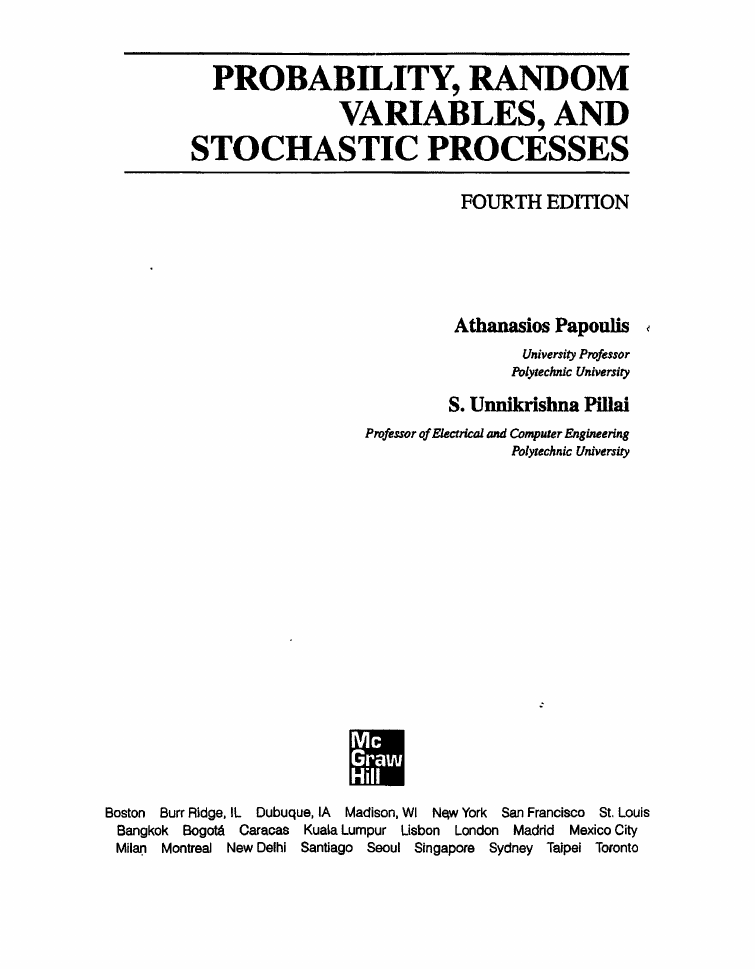
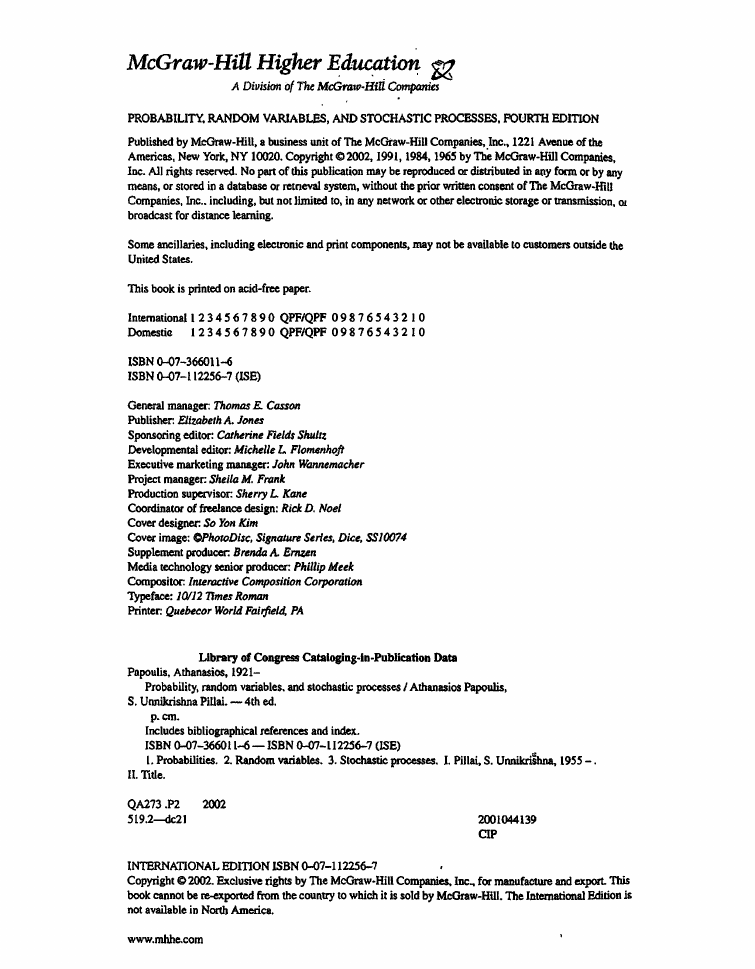
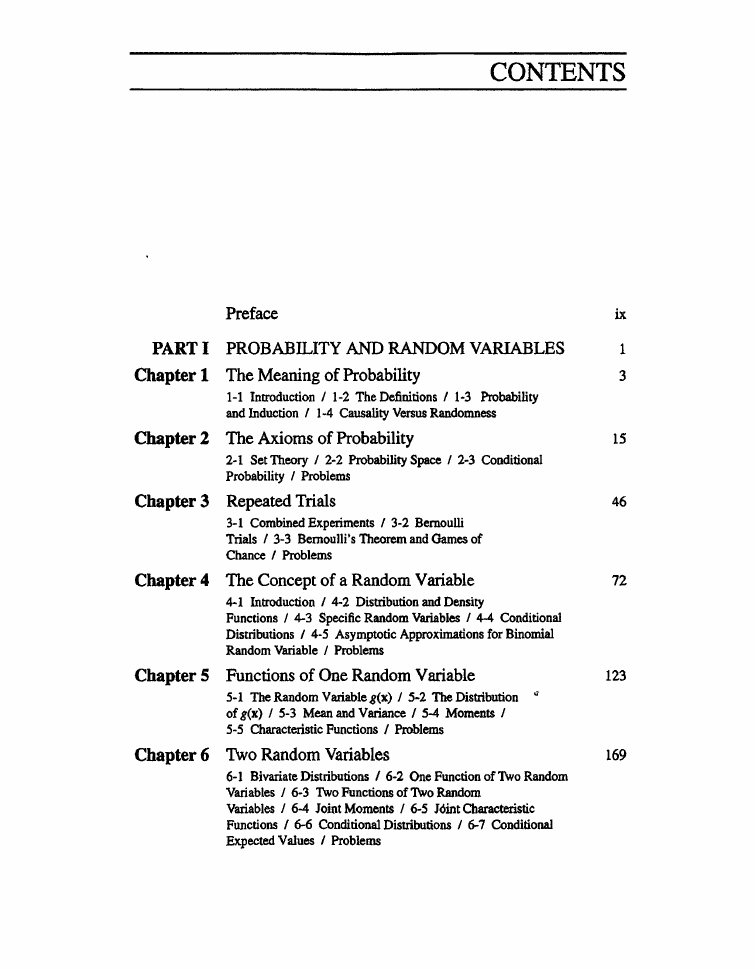
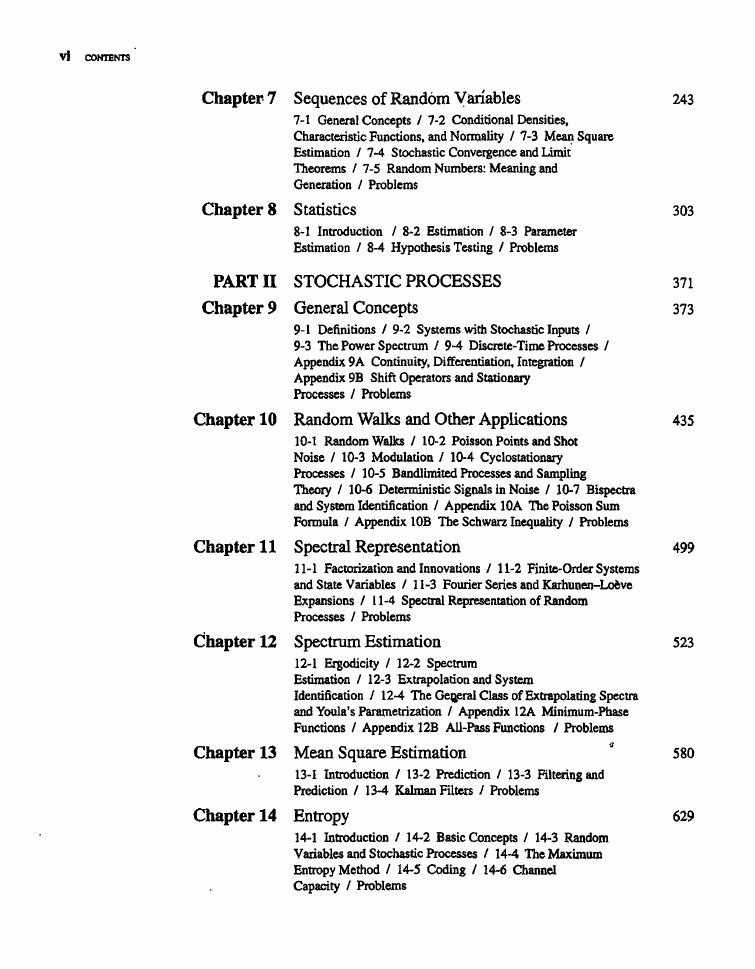
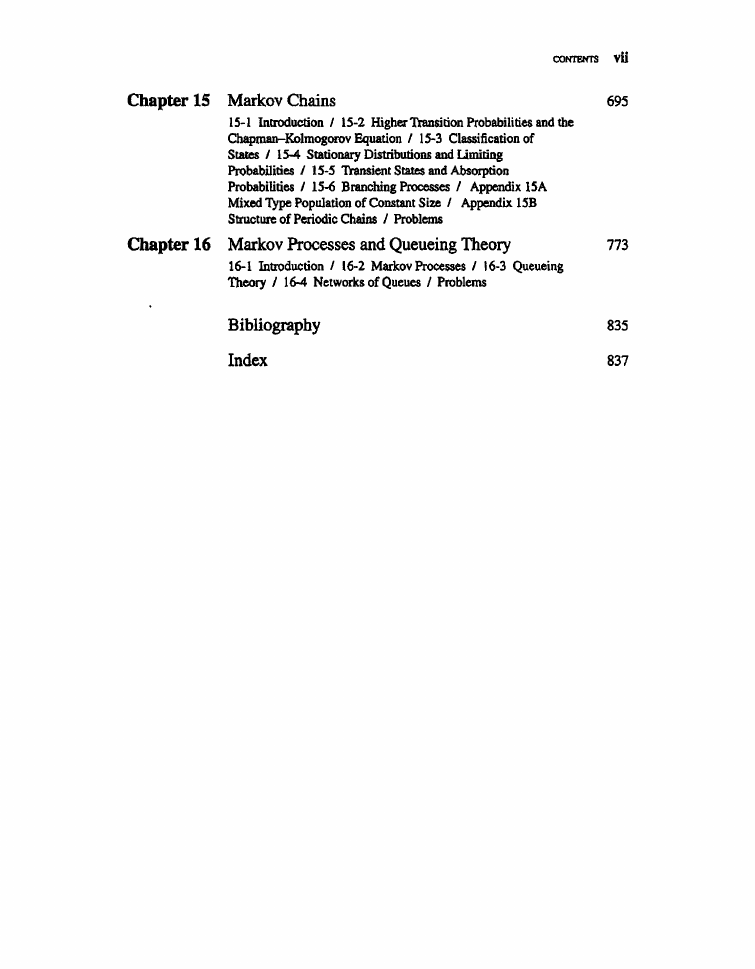

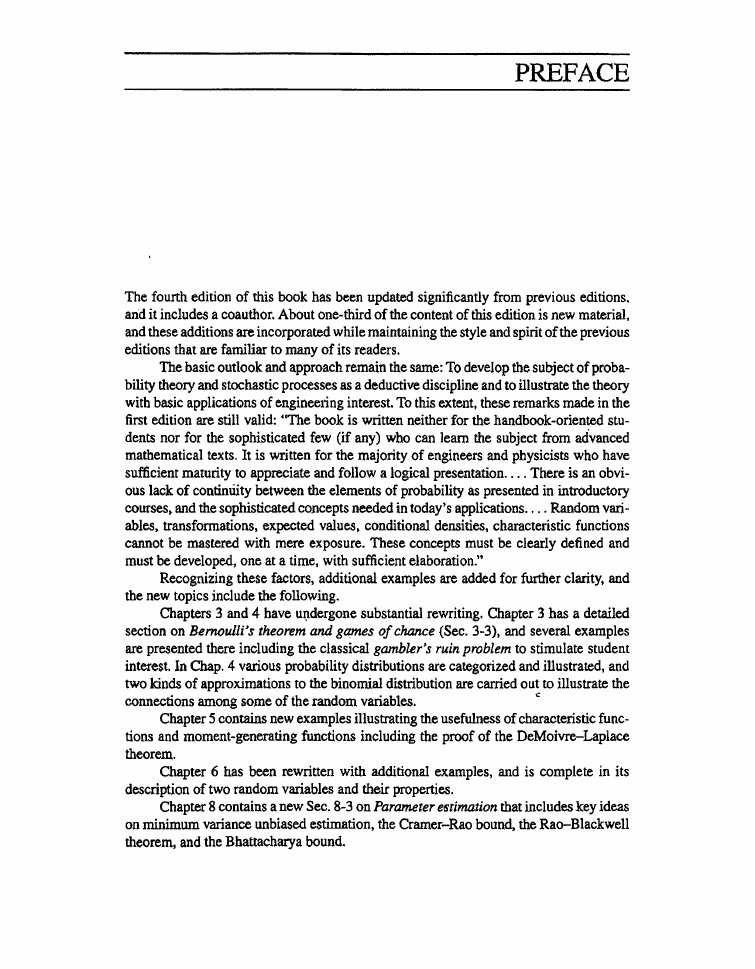
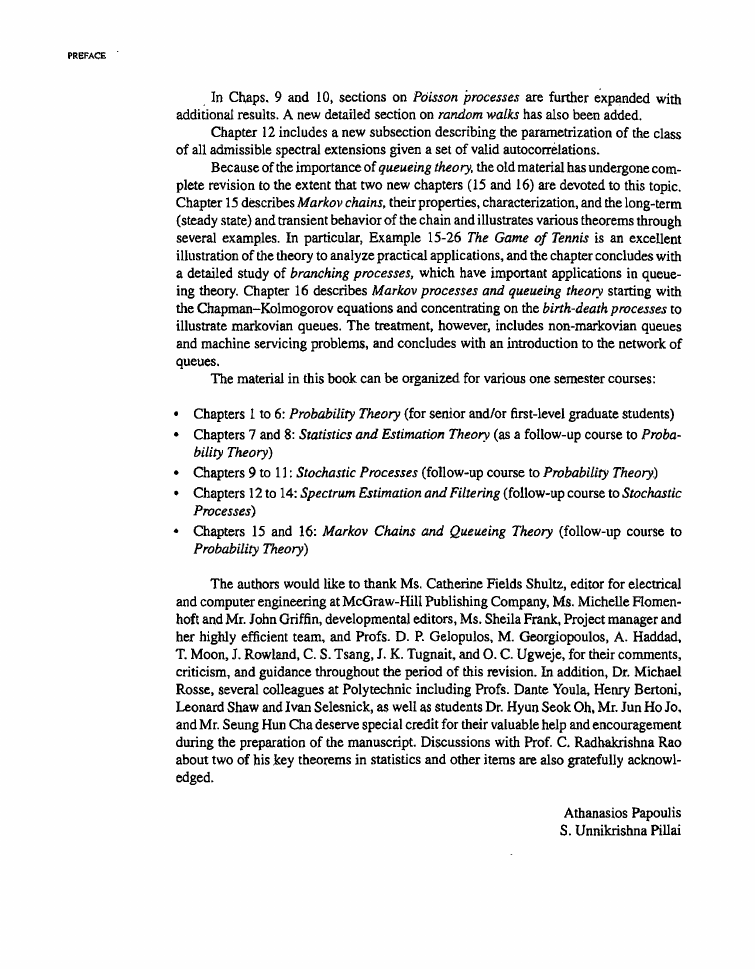








 2023年江西萍乡中考道德与法治真题及答案.doc
2023年江西萍乡中考道德与法治真题及答案.doc 2012年重庆南川中考生物真题及答案.doc
2012年重庆南川中考生物真题及答案.doc 2013年江西师范大学地理学综合及文艺理论基础考研真题.doc
2013年江西师范大学地理学综合及文艺理论基础考研真题.doc 2020年四川甘孜小升初语文真题及答案I卷.doc
2020年四川甘孜小升初语文真题及答案I卷.doc 2020年注册岩土工程师专业基础考试真题及答案.doc
2020年注册岩土工程师专业基础考试真题及答案.doc 2023-2024学年福建省厦门市九年级上学期数学月考试题及答案.doc
2023-2024学年福建省厦门市九年级上学期数学月考试题及答案.doc 2021-2022学年辽宁省沈阳市大东区九年级上学期语文期末试题及答案.doc
2021-2022学年辽宁省沈阳市大东区九年级上学期语文期末试题及答案.doc 2022-2023学年北京东城区初三第一学期物理期末试卷及答案.doc
2022-2023学年北京东城区初三第一学期物理期末试卷及答案.doc 2018上半年江西教师资格初中地理学科知识与教学能力真题及答案.doc
2018上半年江西教师资格初中地理学科知识与教学能力真题及答案.doc 2012年河北国家公务员申论考试真题及答案-省级.doc
2012年河北国家公务员申论考试真题及答案-省级.doc 2020-2021学年江苏省扬州市江都区邵樊片九年级上学期数学第一次质量检测试题及答案.doc
2020-2021学年江苏省扬州市江都区邵樊片九年级上学期数学第一次质量检测试题及答案.doc 2022下半年黑龙江教师资格证中学综合素质真题及答案.doc
2022下半年黑龙江教师资格证中学综合素质真题及答案.doc